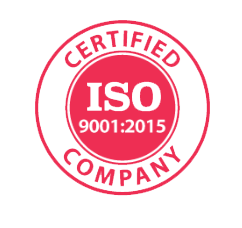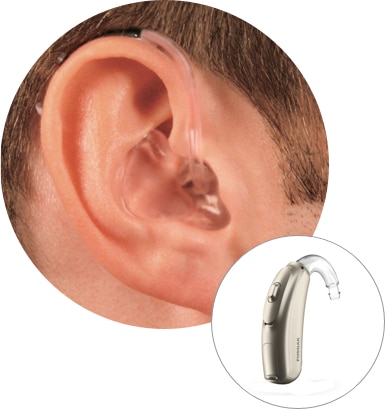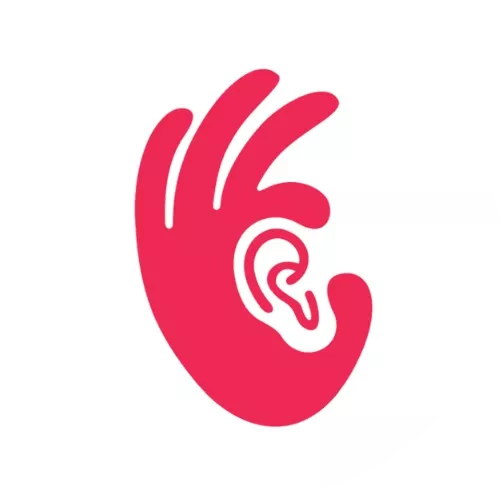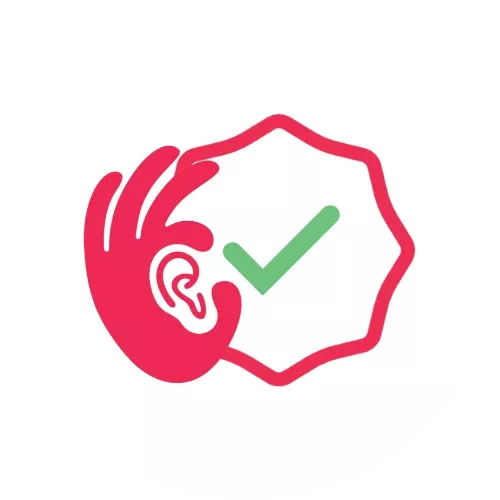Super power hearing aid with directional microphones ;) (Credit: image from web)
We met many clients who are confused over the many hearing aids types available. Risking over-simplification, please put up with me and look at it this way: For a particular model of hearing aid (let’s name it Kancil), its performance and features remain the same no matter what styles it presents. Essentially, a Kancil Behind-the-Ear hearing aid performs more or less the same as a Kancil custom made hearing aid (which is worn inside the ear) albeit its different appearance. It is very much the same with our locally produced automobile, Kancil. Even when car enthusiasts modify the car’s appearance by adding body kit, bigger rims, and even Hello Kitty stickers, it is still a Kancil in its core. So, the many styles of hearing aids are mainly a question of practicality and preference. Please read on for more details.
Behind-the-Ear (BTE)

RIC, Open fit, traditional BTE’s from left to right (Credit: image from web)
Behind-the-ear hearing aid is, true to its name, worn behind the ear with a tube to a custom earmould placed in the outer ear. It is easier to handle and maintain due to its larger size. The earmould which is separated from the hearing aid can be easily replaced. The earmould is durable and cheap. It is suitable for people with mild to profound hearing loss. Those with severe to profound hearing loss are usually advised to be fitted with BTE because of its high gain/amplification. Almost certainly, infants or children are only fitted with BTE as their ears continue to grow and it costs too much (money, and clinical time to re-fit, verify and validate a fitting) to replace a hearing aid every several months.
BTE’s come in two other variants: Open fit and Receiver-in-the-Canal (RIC).

Traditional BTE in ear. Please note the tube and custom ear mould (Credit: image from web)

Open fit and RIC look the same when fitted. Note the thin tube and small hearing aid (Credit: image from web)
i) Open Fitting
Open fit hearing aid is an ultra-small, lightweight BTE that sits snugly behind the ear and connects to the ear with a nearly invisible thin tube instead of a visible earmould. It offers more natural sound and less occlusion than a traditional BTE. It is best for people with a sloping hearing loss where the high-pitched hearing is worse than the low-pitched hearing. This configuration of hearing loss is normally found in people with noise-induced hearing loss or presbycusis (hearing loss due to aging).i) Open Fitting
ii) Receiver-in-the-canal (RIC)
Receiver-in-the-canal or receiver-in-the-ear is very similar with the open fit hearing aid, except for the placement of the receiver. The receiver, instead being encompassed in the hearing aid shell, is attached with a dome/ear piece and placed in the ear canal. This design reduces feedback and provides listening comfort. It is suitable for people with an even more severe sloping hearing loss compare to open fit hearing aids.
Custom Made Hearing Aid

ITC, CIC and ITE from left to right (Credit: image from web)
Custom made hearing aids can be sub-categorized into a few types based on size. They include In-the-Ear (ITE)/Full Shell, In-the-Canal (ITC)/Half Shell, Completely-in-the-Canal (CIC) and Micro Completely-in-the-Canal (Micro CIC). Audiologists will discuss the options with their clients. A suitable type of custom made hearing aid is dependent on a few factors, namely severity of hearing level, maintenance cost, dexterity, aesthetics etc.Custom made hearing aids are specially hand-crafted to each individual’s ear. The audiologists will take an impression of the clients’ ears (just like making denture!) and the resulting “negative” will be sent to a lab for assembly. So custom made hearing aids are truly limited edition, and can only fit in its owner’s ear!
Once again, custom made hearing aids are not suitable for infants and children because their ear canals and pinnae are still growing. It will not fit the outer ear properly over some time as the outer ear grows. Consequently, the hearing aid might drop out easily and sound leak out through the unoccupied space of a growing ear canal. Custom made hearing aid is also not suggested for those with recurrent middle ear discharge. It is because ear discharge could potentially shorten the lifespan of the hearing aid.
The variants of custom made hearing aids are:

ITE, ITC and CIC from top to bottom (Credit: image from web)
i) In-the-Ear (ITE)/Full Shell
- ITE is custom made hearing aid which fits completely in the outer ear. Most features such as volume control, program change button and larger receiver could be accommodated in an ITE due to its larger size.
- Easier to handle and hold the hearing aid especially for elderly with reduced dexterity
- More visible compared to an open fit hearing aid and other smaller custom made hearing aids
- Suitable for mild to severe hearing loss
ii) In-the-Canal (ITC)/Half Shell
- ITC fits outside the ear canal.
- Smaller compare to ITE
- Hearing aid features like volume control, program button, might be restricted due to its smaller size
- Suitable for mild to moderately-severe hearing loss
iii) Completely-in-the-Canal/(CIC) & Micro Completely-in-the-Canal (Micro CIC)
- CIC fits in the ear canal completely.
- Micro CIC is the smallest custom made hearing aid. It is even smaller than CIC.
- CIC and mico CIC are usually attached with a thin remover string to aid insertion and removal.
- May not be suitable for those with narrow ear canals because of reduced space for electronic components
- Some features such as volume control, directional microphone, have to be sacrificed due to limited space.
- Only suitable for mild to moderate hearing loss
Summary:
Generally, prices, fitting range/power of a hearing aid, and battery life are inversely related to the size of hearing aid. In other words, a smaller hearing aid usually costs more to maintain (battery runs out faster, need to replenish battery more often) and it is not powerful enough for those with more severe hearing loss.
This article only serves as a general guide. Please talk to your audiologists and together you will find the most suitable hearing aid.














.webp)





